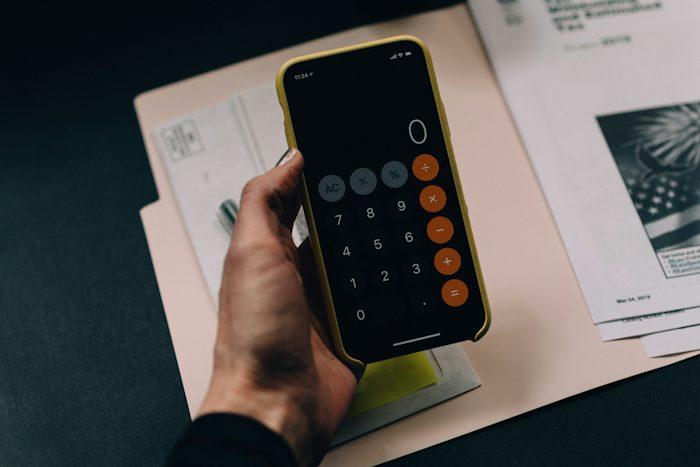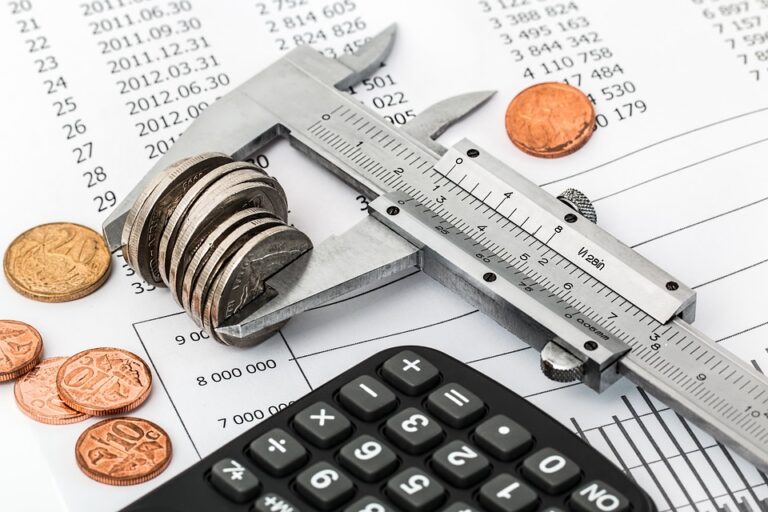Last updated Feb. 19, 2024 by Jessica Green
Have you tried making a budget? Was it successful? If it wasn’t, there’s a high chance you’re missing the key components to a successful budget.
Many believe budgeting to be time-consuming, daunting, and overall boring. If you share in this belief, here’s the truth, budgeting is fun if you are doing it the right way. But what is the right way?
In this article, I’ll highlight the key to a successful budget, the right ways to plan and make a budget, budgeting tips, and the features of a successful budget.
#1 Key To A Successful Budget
If you have ever wondered why your budgeting plan doesn’t work out, it could be that you lack the commitment to carry it out. Commitment is the #1 key to a successful budget.
Anyone can make a budget. Once you review your income and expenses, you can easily come up with a realistic plan that aligns with your financial goals. But regardless of how realistic your budget is, it won’t work out if you lack commitment to the plan.
Therefore, commitment to a budget is what makes it successful. But as you know, commitment to a budget is easier said than done. It requires a high level of self-control and consistency.
To build self-control and consistency towards a budget, you need to know the right way to make a budget.

Right Ways To Make A Successful Budget (Guide On How To Make A Budget)
If none of your budgeting plans have ever worked out, it’s time to admit you’re not doing it the right way. Here’s a simple guide on how to make a budget that works.
1. Calculate and State Your Net Income
Knowing your actual monthly income is the first step to having a successful budget. If you own a business, your profits less taxes is your net income. But if you’re paid by an employer, the salary you receive is most likely your net income.
Do not create a budget based on your total income. It makes you overestimate your goals and abilities.
Having an understanding of how much you really earn ingrains a consciousness in you. This consciousness often arises when you’re tempted to overspend. Thus, it is helpful.
Once you’re always conscious of your financial status, you will become more likely to stay on budget.
2. Track and List Out All Your Monthly Expenses
Once you spell out your net income, listing out your monthly expenses is the next thing to do.
Do not neglect an expense. List them all out. Doing this enables you to point out areas where saving is possible. It also helps you understand your spending pattern and how to cut down or stop certain spending habits.
Start by listing out your fixed monthly expenses. Here are a few inevitable fixed expenses:
- Rent or mortgage payments
- Utility bills (internet and phone bills, water, gas, and electricity)
- Groceries
- Loan payments (car loans, student loans, and personal loans)
- Insurance payments
- Retirement Savings
- Child Care Support
Oftentimes, fixed expenses are inevitable and leave no room for adjustments or savings. So it is important to also list out your variable expenses regardless of how insignificant you think they are.
Looking at your bank statement is a good way to discover your monthly variable expenses.
Another Interesting Article: 21 Cheapest Ways to Live to Cut Your Living Expenses
3. Set Realistic Financial Goals
Once you gain an overall understanding of your income and expenses, set a financial goal in mind. This goal must be realistic.
Do not underestimate or overestimate yourself. Set a financial goal that can be accomplished.
For example, if you have a smoking habit that eats into your income, set a budget that allocates funds for cigarettes. Most smokers overestimate themselves by setting a budget that does not include cigarette costs. They do this in hopes of saving money. However, they end up spending on it, making their budget plan a failure.
The reason most budgets fail is due to their unrealistic goals. If you know you’re incapable of cutting down on your monthly internet bills, do not set a goal that includes less amount for internet bills.
Overall, be realistic. Know what you can and cannot do.
4. Make Adjustments To Your Expenses
Once you set a goal in mind, make spending adjustments that align with the set goals.
If your goal is to cut down on your monthly subscriptions, take a look at your subscriptions and choose lower-cost plans. Similarly, if your goal is to cut down on grocery expenses, you can begin to take advantage of coupons and deals offered by stores and sites.
If you have a saving target in mind, study the expenses you make and find areas that can be adjusted.
5. Commit To The Budget
This is the part most people seem to skip. Once you set a goal and create a budget, commit to it.
Make stickers of your budget and place them where you can always see them. If this doesn’t work for you, seek the assistance of a friend or family member. They can help supervise and manage your expenses.
Another way to commit to a budget is by seeing it as a game or challenge.
6. Review Your Budget Regularly
Always study and review your budget. Doing this can help you discover more savings opportunities.
The process of reviewing your budget involves carrying out the steps and guide mentioned above.
3 Key Components Of A Successful Budget
For a budget to be successful, it has to possess the following components and features:
Flexibility
A flexible budget is a budget that can be adjusted.
When making a budget, leave room for adjustments. This is because life is unpredictable. There are times when you’ll have no choice but to overspend in a situation. Thus, your budget must be able to accumulate sudden changes without ruining your goals.
Practical
A well-planned and practical budget is a successful budget. If you set a high and unreasonable target, the chances of it being successful are low.
Your budget must be created after carrying out a series of thoughts and research. It must align with your ability.
Inspiring and Motivating
A look at your budget should get you inspired and motivated. If you’re motivated by your budget, it leads to consistency and commitment to the budget. Which in turn leads to a successful budget.
To keep your budget inspiring and motivating, engage in saving games and challenges. Give yourself a prize or reward each time you complete or accomplish a budget.
11 Tips For Budgeting
To get started on your budgeting journey, here are a few tips that could come in handy:
1. Budget To Zero
Once you receive your salary, make a budget for every single dollar. When you give a name or task to every dollar, you’ll be less likely to engage in overspending. This is called zero-based budgeting.
2. Involve a Friend or Partner
Making budgeting plans with a trusted friend or partner increases your chances of having a successful budget. Plus, it’s fun and motivating.
3. Make a New Plan For Each Month
Each month comes with different expenses and saving opportunities. For example, you’re most likely to spend more during Thanksgiving month. So, it is important to conduct a regular review of your budget.
4. Pay Off Debts First
If you owe debts, your budgeting plan must prioritize paying off the debt. Some of the fastest ways to pay off debts include:
- Debt Avalanche: This is when you focus on paying off debts with the highest interest rates.
- Snowball Method: Unlike debt avalanches, this method suggests that you start by paying off the lowest debts.
- Debt Consolidation: This method involves combining all your debts into a single account.
5. Set Goals
Having a goal that aligns with your budget keeps you motivated. However, it is important to set practical and realistic goals.
6. Track Your Progress
Keep track of how you’re following your budget and goals. You can do this on a daily or weekly basis.
When you keep track of your progress, you can easily point out areas you’re lacking.
7. Do Not Use Credit Cards
Using credit cards can lead to overspending. Stick to the use of cash or prepaid cards. Using cash makes you conscious of your expenses.
8. Use an Online Budgeting Tool
There are tons of online budgeting tools that make budgeting easier. If you find it stressful or boring to analyze your income and expenses, try using online tools.
9. Be Lenient With Yourself
When setting goals, give yourself some sort of grace. Do not go hard on your financial goals. Start by setting goals you can easily accomplish. Once you succeed at the first goal, aim for something higher.
10. Categorize Your Needs and Wants
Prioritize your needs over your wants. If you can, cut down spending on things you can do without.
11. Try Automation
There are tons of apps that make budgeting fun and easier. These apps offer features and tools that help you achieve your financial goals.
Another Interesting Article: How to Cultivate a Budgeting Mindset in 4 Easy Steps
7 Best Budgeting Apps In 2024

Here are the best and unique budgeting apps to use in 2024:
1. Rocket Money (Formally TrueBill)
This is one of the best budgeting apps to download. It is free but allows you to enjoy advanced budgeting tools for as low as $3 to $12 per month.
Rocket Money is most known for helping users cut down on their expenses. This app tracks your spending and categorizes them.
Read More: Rocket Money Review: Can It Really Cut Your Bills Automatically
2. PocketGuard
PocketGuard is another popular budgeting app. It is well-known for its budgeting planning and bill-organizing tools.
With this app, you easily pay off debts and achieve savings goals. Most of its tools are directed towards helping you pay off your debts.
3. EveryDollar
This is a premium budgeting app with tons of advanced features. Some of which include bank connectivity, smart tracking, financial coaching, budget customization, export to CSV file, paycheck planning, custom reporting, and more.
4. YNAB
You Need A Budget (YNAB) uses the zero-based budgeting method. Once you install and grant this app certain permissions, it’ll assign a plan/task to every dollar you receive as income.
YNAB analyzes your spending habits and categorizes them. It then proceeds to tell you how much should go into the various categories.
5. GoodBudget
Good Budget is a unique budgeting app that uses the envelope method.
The envelope method is a budgeting method that involves putting a cash amount of cash in labeled envelopes. Each labeled envelope with cash represents the amount you assign to an expense.
This method enables you to easily track your expenses and know your financial stance.
GoodBudget adopts this method. But rather than use cash, the app allows you to transfer/portion money to different online envelopes.
6. HoneyDue
If you have a budgeting partner, this app offers budgeting tools that accommodate two people. It allows you and your partner to sync your bank accounts.
It analyzes the spending habits of the two accounts and categorizes them – this makes it easy for couples to budget their finances together.
7. Personal Wealth
This app acts as a budgeting, investment, and wealth management tool. Once you download this application, you’ll be required to connect your bank and savings account, credit card, or retirement account. Afterward, you’ll be free to enjoy tools such as an automatic budgeting tool, net worth tracking, savings planner, cash-flow overview, and more.
Conclusion
Overall, the key to a successful budget is commitment. The best budgeting plan can fall through if you lack commitment to the budget. The above article provides tips and guides that help you stay committed to a budget.
Frequently Asked Questions On Budgeting
Why Is Budgeting Important?
Having a budget stops overspending, creates financial awareness, makes you prepared for financial emergencies, and makes you reach your goals.
What Is The 50 30 20 Budgeting Rule?
The 50/30/20 rule states that you should assign fifty percent of your net income to needs, thirty percent to wants, and twenty percent to savings or debt payments.
What Is The Easiest Way To Make A Budget
Budgeting applications make it easy to create a budget. Some free budgeting apps to consider include Mint, YNAB, PocketGuard, and GoodBudget.







